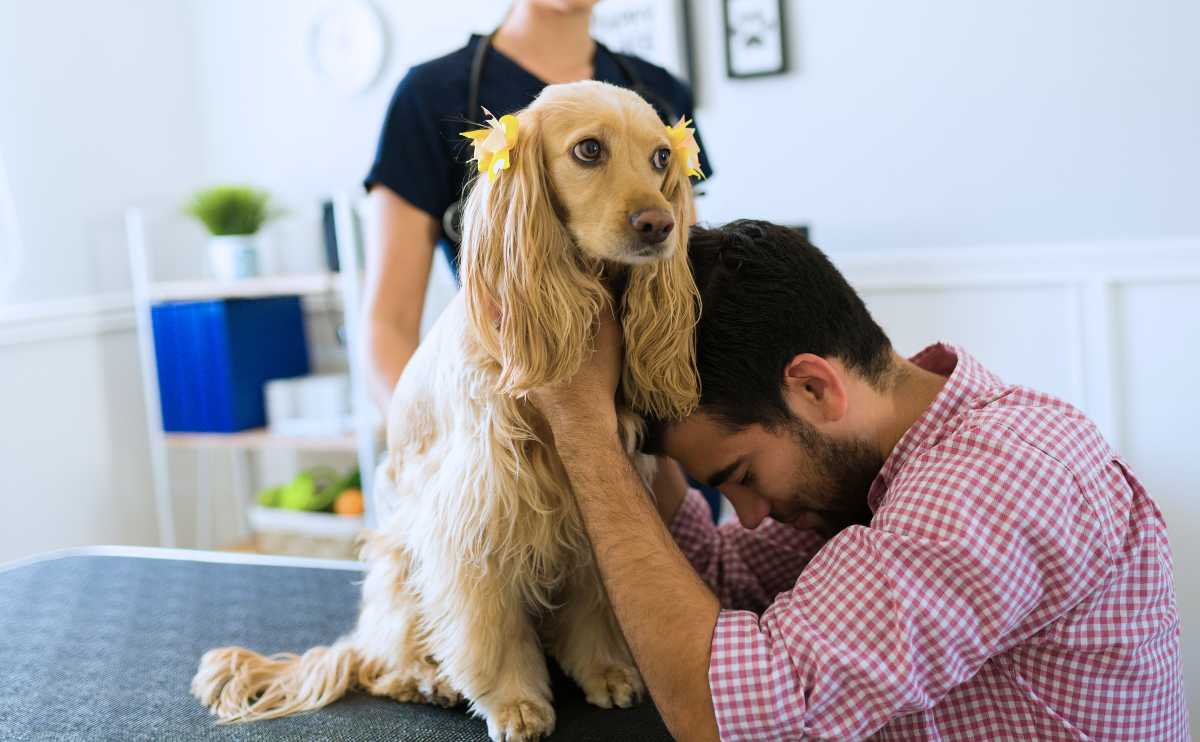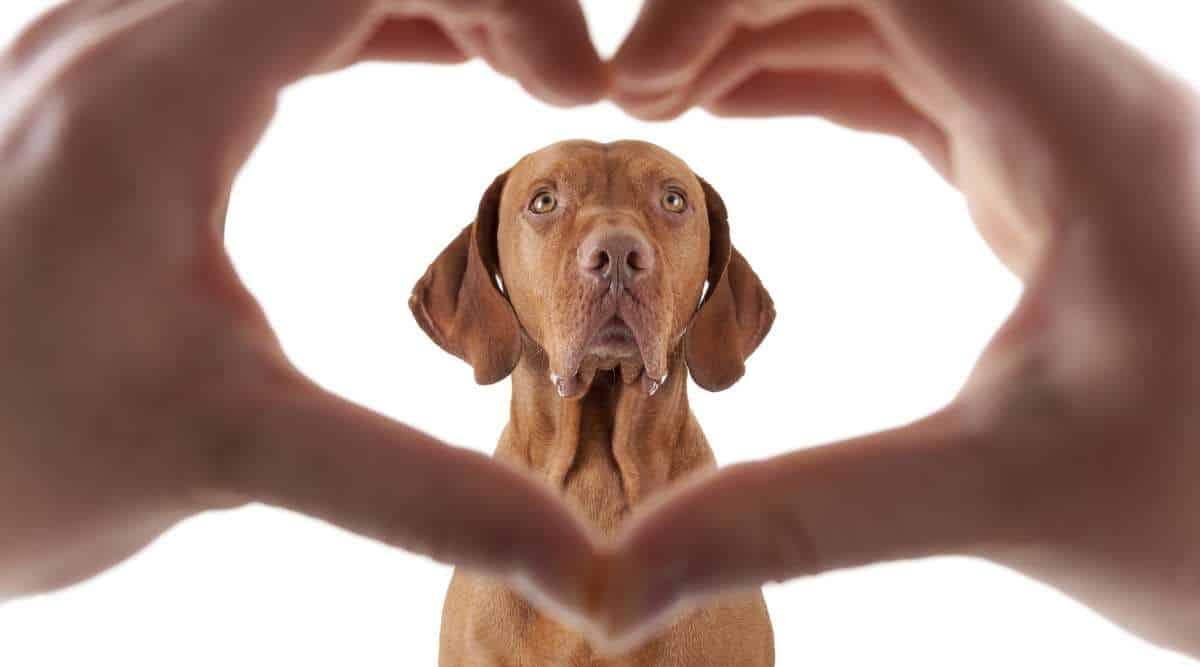Why Is My Dog Acting Like a Nervous Teen? 8 Reasons They’re Chewing Their Nails
When you purchase through links on our site, we may earn a commission. Here’s how it works.
Is your dog impulsively biting their nails like a nervous teen before finals? While it might seem like a simple quirk, nail biting in dogs can be a sign that something is going on beneath the surface.
Table of Contents
From allergies to anxiety to plain old boredom, there are several reasons your pup might be obsessing over their paws. Here’s what could be causing it and how you can help.
Why Do Dogs Bite Their Nails?
When dogs bite their nails, it usually means something is bothering them. Maybe their nails are too long, something is stuck, or the skin around the paw is itchy or irritated.
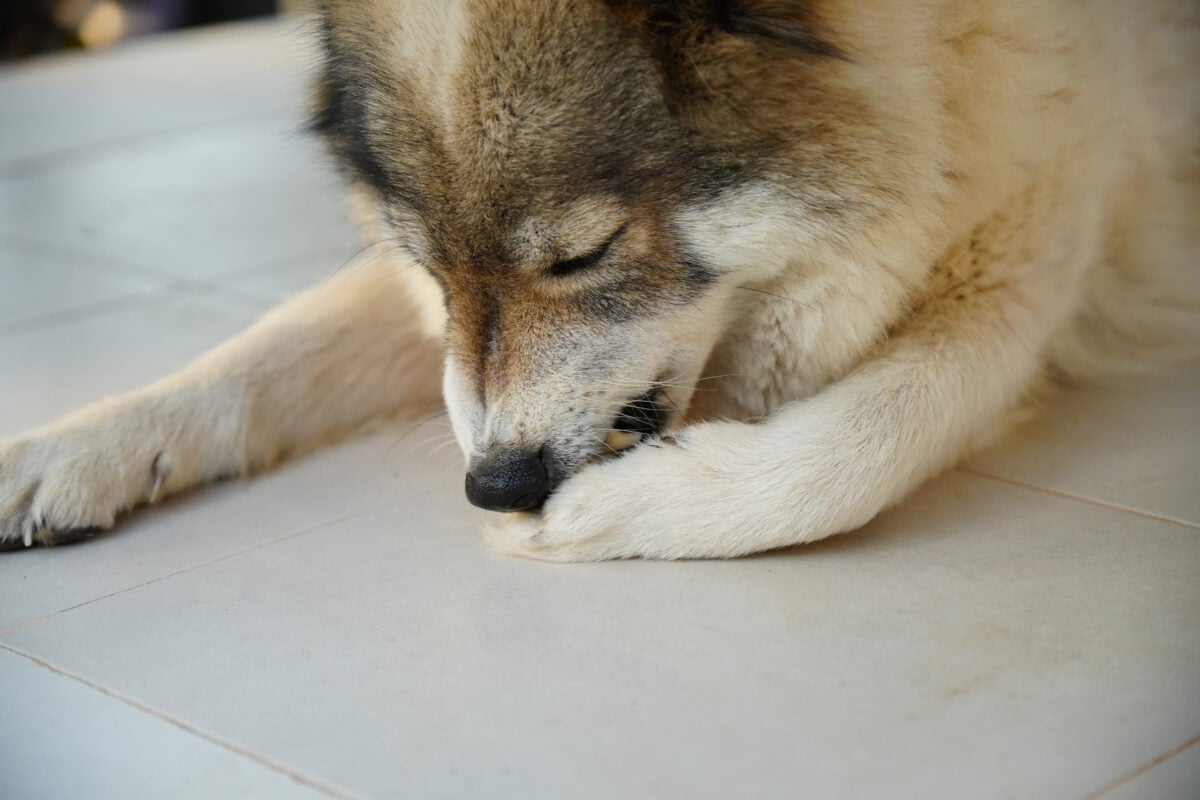
It might also be a nervous habit, especially if your pup is prone to anxiety.
Since dogs don’t have hands, they use their mouths to investigate and manage discomfort. Nail biting is often a way for them to scratch an itch, soothe pain, or try to fix something that feels off.
Here are a few common triggers:
- Overgrown or cracked nails
- Debris caught between the toes
- Skin irritation or infection
- Stress, anxiety, or boredom
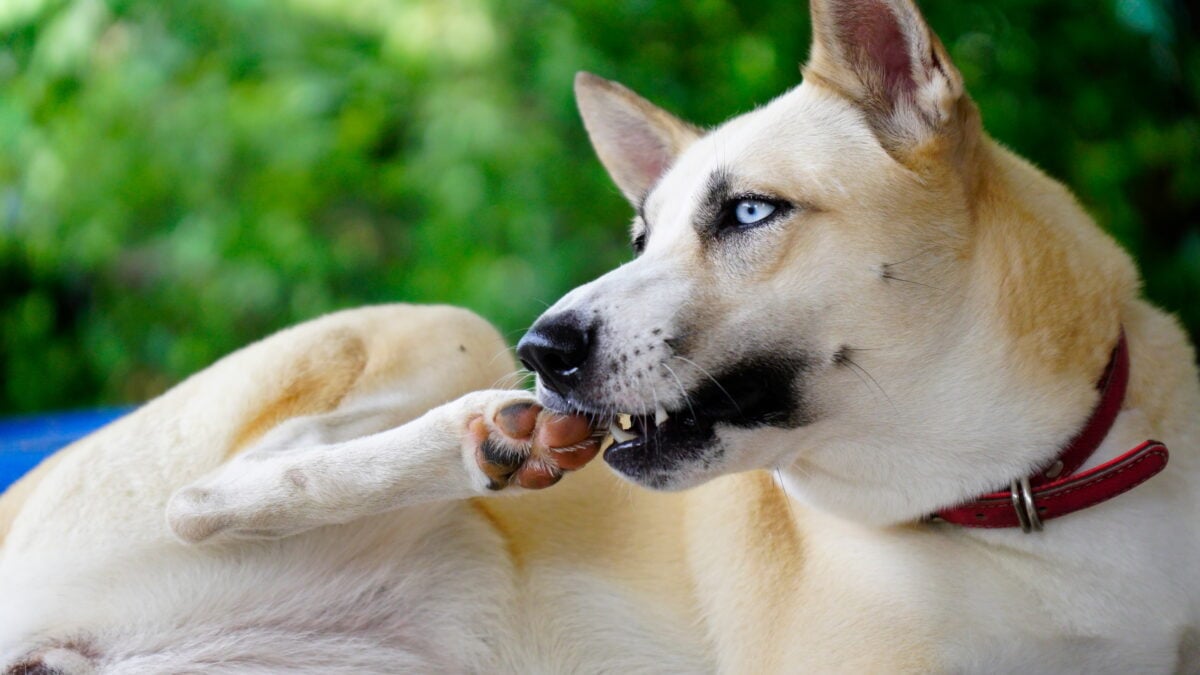
Heads up: If the chewing is constant or intense, it’s time to take a closer look. Frequent nail biting is usually a sign that your dog is uncomfortable and needs your help.
Next, let’s go through the most common causes, one by one.
8 Reasons Your Dog Is Chewing Their Nails
Nail chewing can mean a lot of different things. For some dogs, it’s just a sign they need a trim. For others, it could be linked to irritation, stress, or an underlying health issue.
The good news is that most causes are easy to identify once you know the signs. Below are eight common reasons your dog might be chewing their nails and what you can do to help.
1. Overgrown Nails Or Missed Grooming
Sometimes, nail chewing is just your dog’s way of saying, “My nails are way too long.”
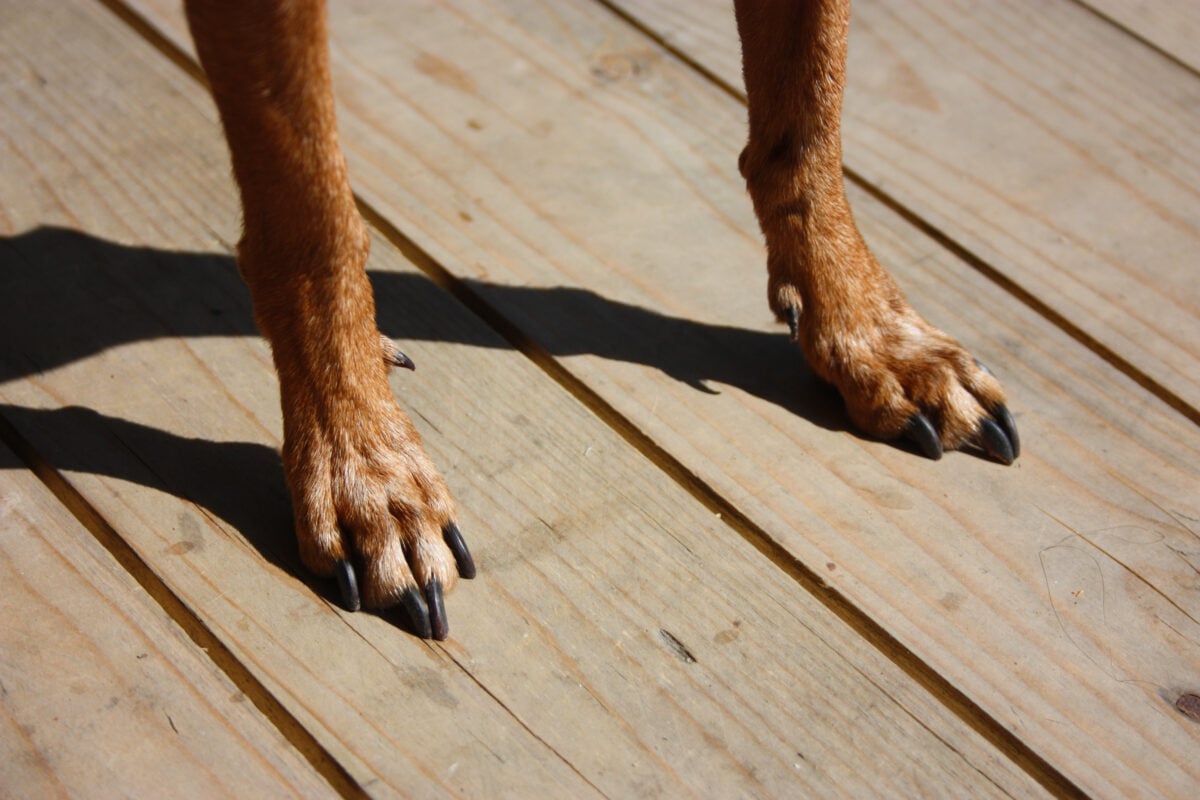
When nails grow too long, they can press into the paw pad, making everyday activities like walking, running, or jumping uncomfortable.
If left unchecked, overgrown nails can curl, crack, or even dig into the skin. That opens the door for infections and painful injuries.
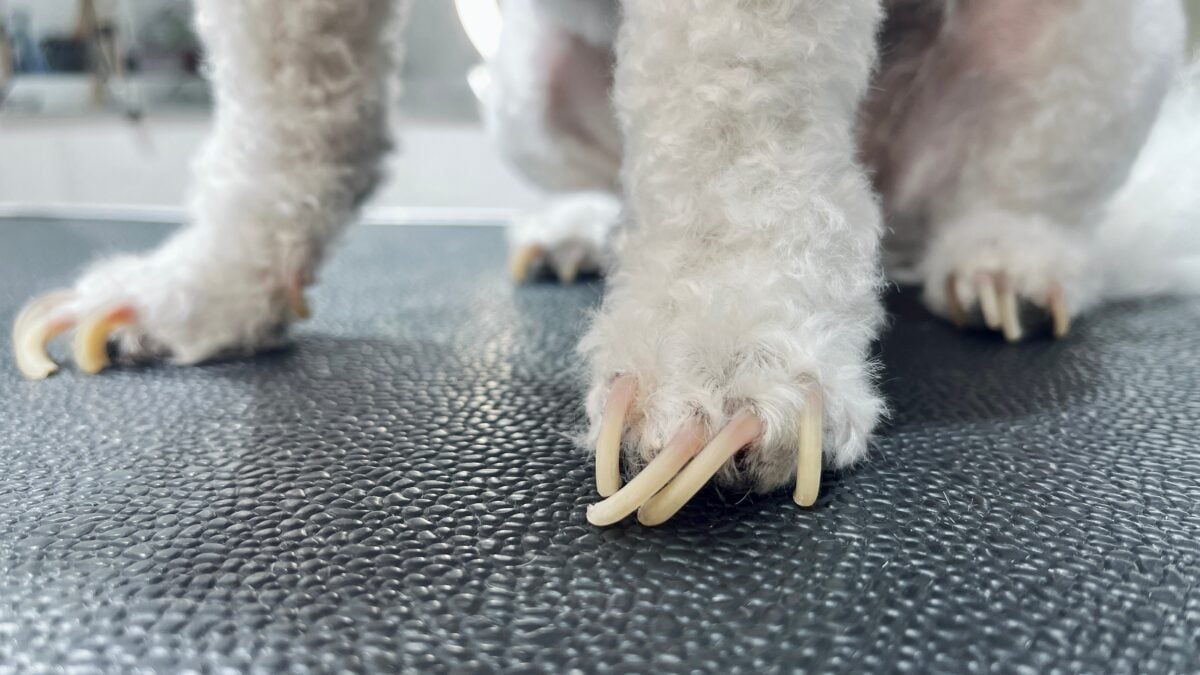
Long nails also throw off your dog’s gait and posture, which can cause joint strain over time.
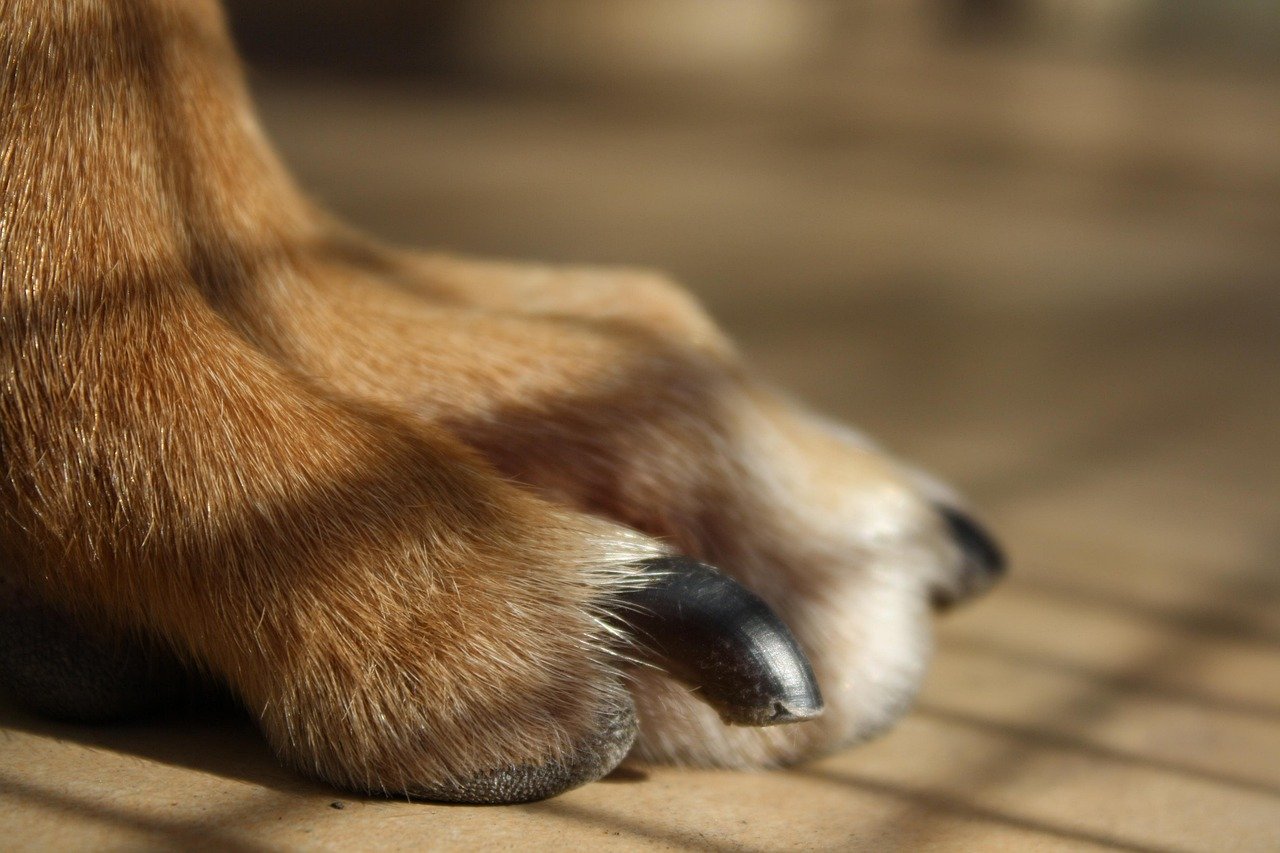
Quick tip: If you can hear your dog’s nails clicking on the floor, it’s probably time for a trim. A dog nail grinder is a safe option if clippers make your pup nervous.
For extra-fluffy dogs, nail chewing might not be about the nails at all. Some pups have thick fur between their toes that gets tangled or matted. Think of it like a twisted sock seam that keeps rubbing your foot; it’s not unbearable, but it gets annoying fast.
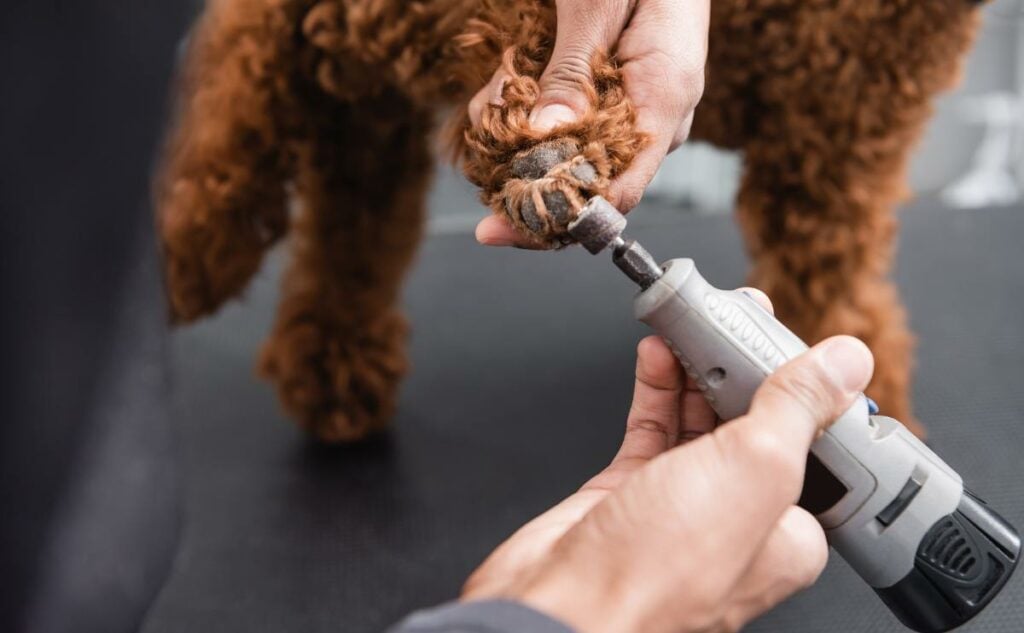
Try using a de-shedding brush to keep paw fur under control. And if you’re not sure where to start, check out our grooming tips for help with trimming, brushing, and more.
Whether it’s long nails or excessive paw fluff, this is one of the easiest issues to address. If your pup is chewing or licking their paws, a grooming session may be all they need.
2. Allergies
Yes, dogs can also have allergies. And, just like us, they can react to grass, food, or seasonal changes in the environment.
When allergies strike, the paws often bear the brunt of the pain. Chewing and licking may be your dog’s way of coping with the itch.

Common Allergy Triggers
- Grass: After a walk or playtime, their feet may become red, itchy, and irritated. This leads to chewing and licking, especially in spring and summer.
- Seasonal allergens: Just like humans, dogs can react to pollen, mold, and other airborne triggers. You may notice that chewing starts during certain times of the year or after outdoor activities.
- Food sensitivities: Reactions to specific proteins or ingredients often show up as skin issues. Even if the allergy is internal, dogs will chew at their paws in response to the itch.
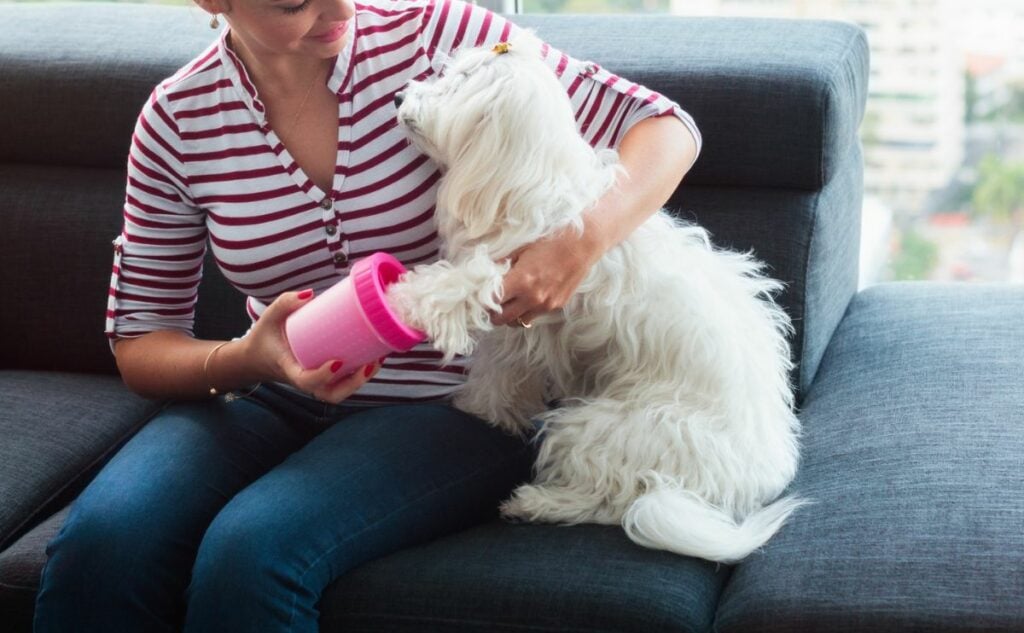
Try this: Use a gentle dog shampoo for allergies to wash away irritants and soothe skin after outdoor time. Wiping your dog’s paws with Earth Rated Dog Wipes or using a no-rinse paw foam like Dandylion Clean Paws can also help prevent allergic flare-ups.
To soothe irritated skin, consider using a gentle paw balm, like Natural Dog Company’s Paw Soother, or anti-itch spray made for dogs. These can help moisturize dry, cracked areas and reduce inflammation between grooming sessions. For more tips, see our guide to itchy skin home remedies for dogs.
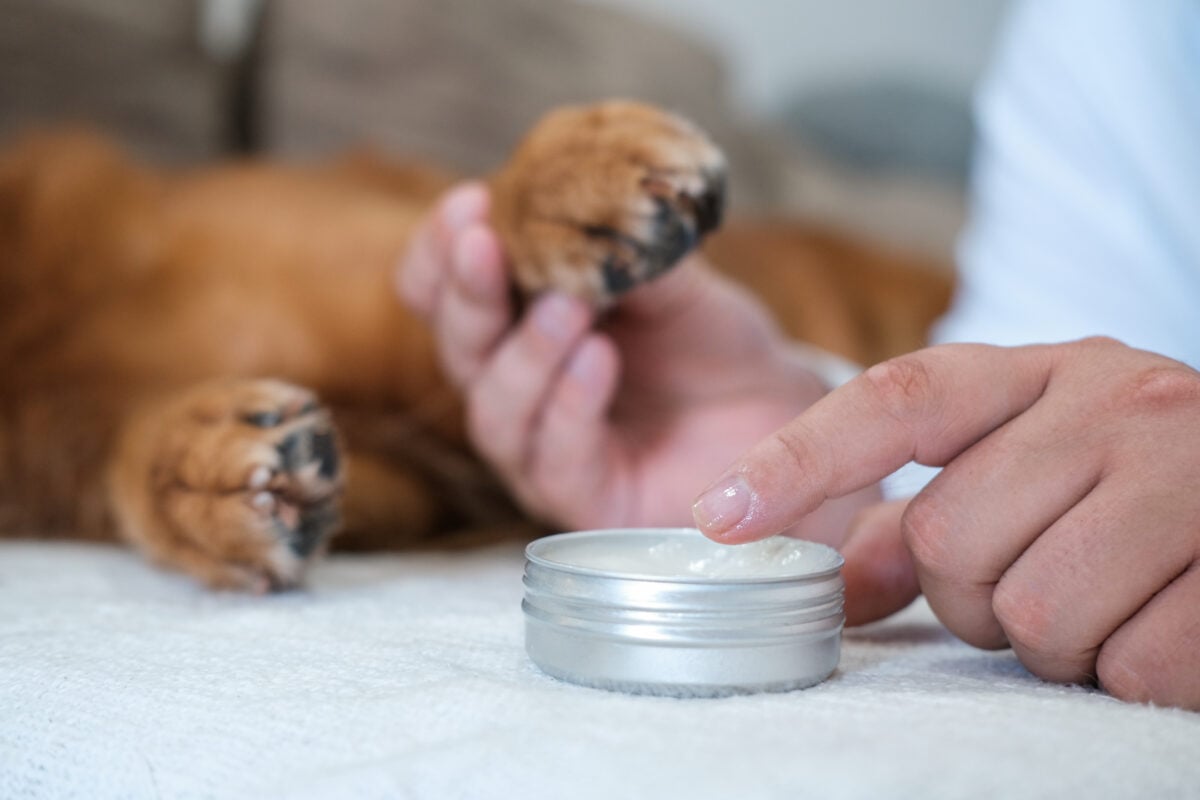
In mild cases, your veterinarian may recommend an antihistamine, such as Benadryl, to relieve symptoms. The standard dose is 1 mg per pound of body weight; however, always consult your veterinarian first to confirm what’s safe for your dog.
You can also explore other allergy medications for dogs or ask your vet about using a daily dog allergy supplement to support long-term relief.
Breed-Specific Note: Some Dogs Are More Prone Than Others
Certain breeds are more prone to developing the underlying issues that lead to nail chewing.
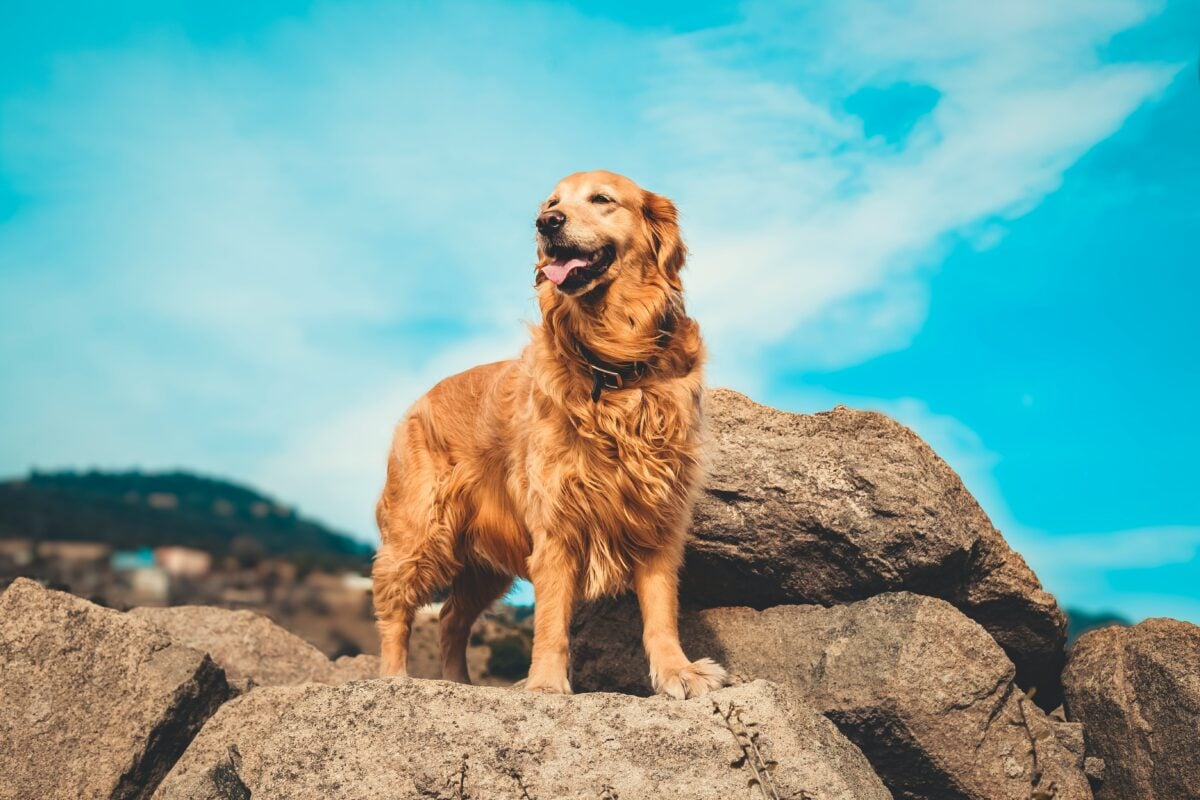
For example, Golden Retrievers, Bulldogs, and German Shepherds are known to be more susceptible to allergies. At the same time, breeds like Greyhounds and Whippets may have more delicate nails prone to cracking.
If your dog’s breed is prone to skin sensitivities, joint pain, or nail fragility, you may need to stay extra on top of paw care and routine checkups. Knowing your pup’s predispositions can help you prevent problems before they start.
3. Fleas or Ticks
If your dog is chewing at their nails or toes, don’t rule out tiny stowaways. Fleas and ticks love to hide in dark, warm crevices, and between the toes is prime real estate.
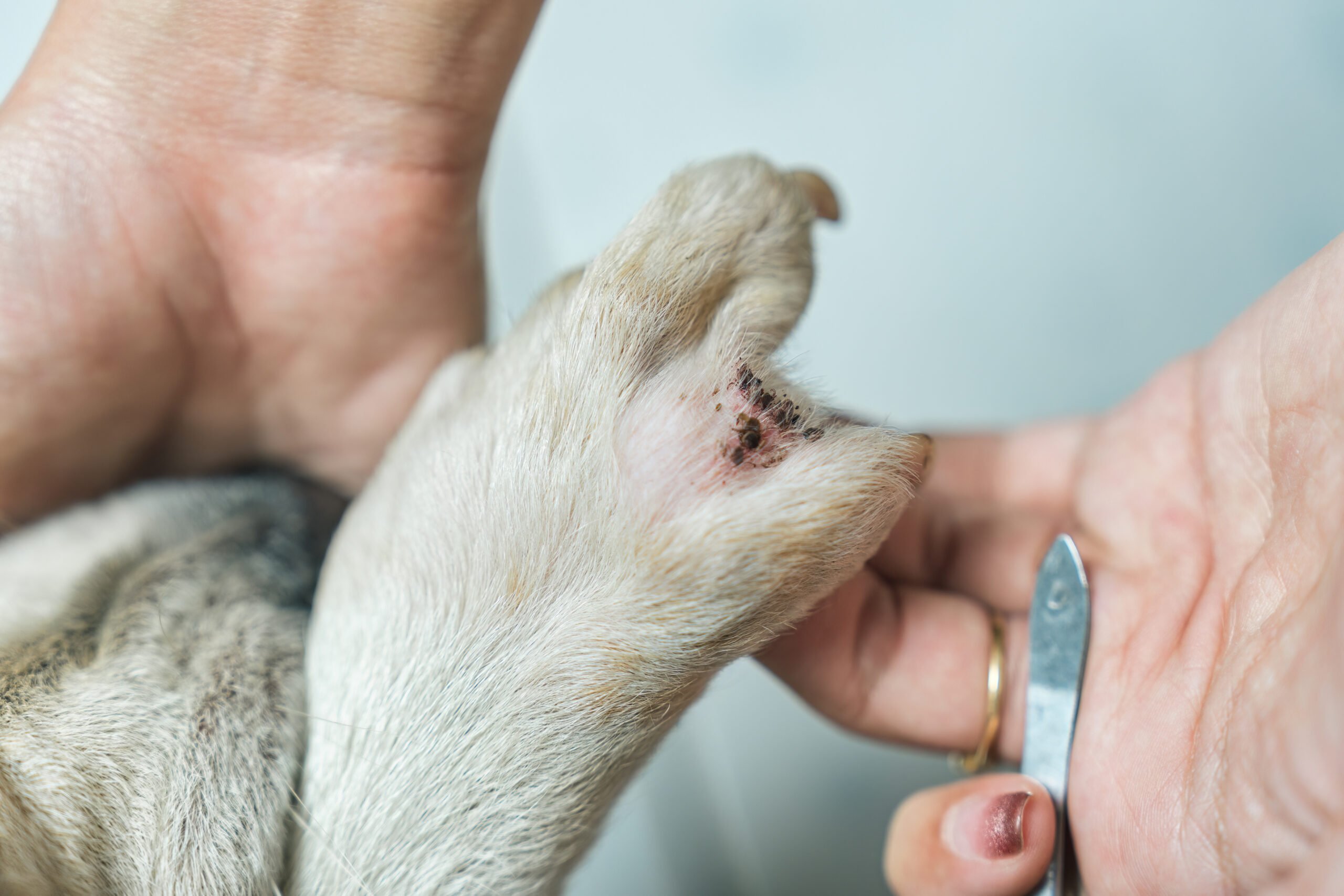
Ticks, in particular, can burrow between the toes or into paw pads and cause severe irritation. If your pup is fixated on their feet, check between each toe and around the nails for any unwanted visitors.
Important: If you find a tick, consult your veterinarian before attempting to remove it yourself. Ticks can be tough to extract completely, and leaving parts behind can lead to infection. For help, see our guide on how to remove a tick from a dog.
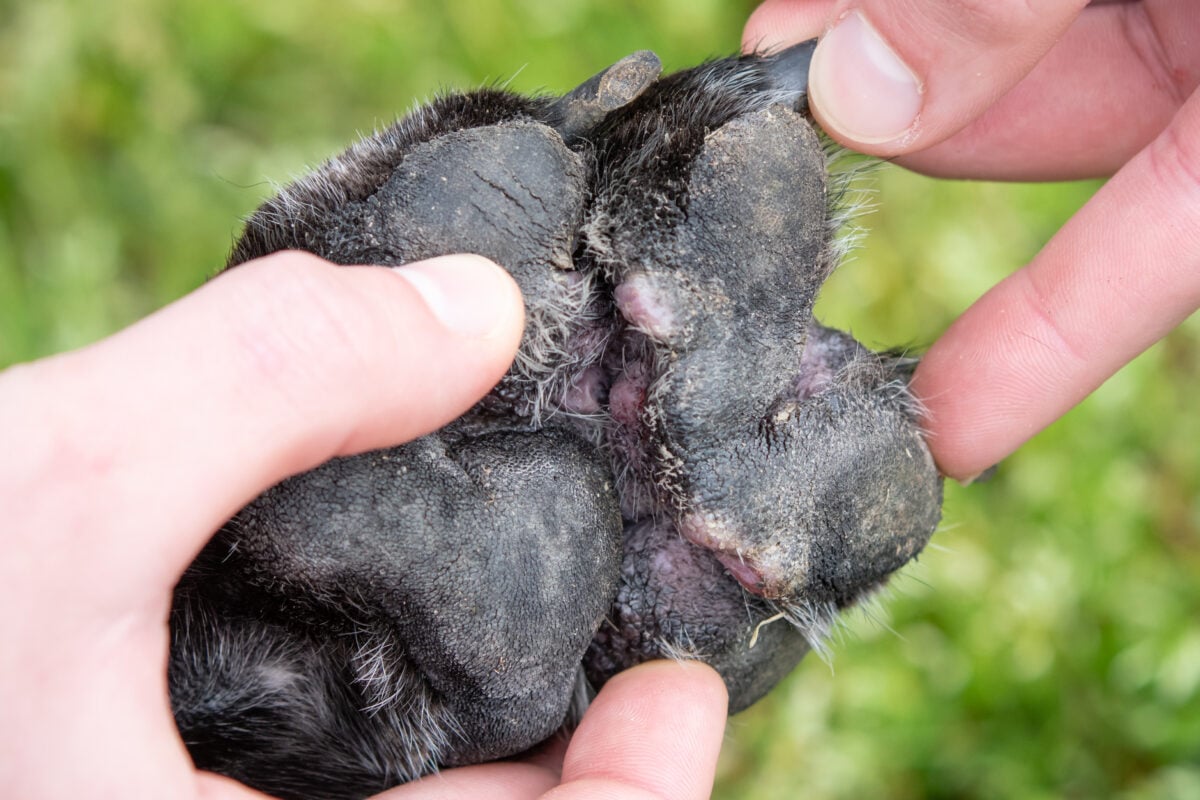
Another possible culprit is flea allergy dermatitis, an allergic reaction to the saliva of fleas. Even a single flea bite can cause intense itching, especially around the feet and legs. Learn how to spot and treat infestations in our guide on how to get rid of fleas on dogs, or explore natural home remedies if you’re looking for gentle alternatives.
Monthly flea and tick preventatives are your best defense against these pests. A flea and tick subscription can make staying on top of protection simple and stress-free.
Other helpful tools include:
- A soothing flea shampoo for dogs to relieve itching
- Information on flea eggs to help prevent re-infestation
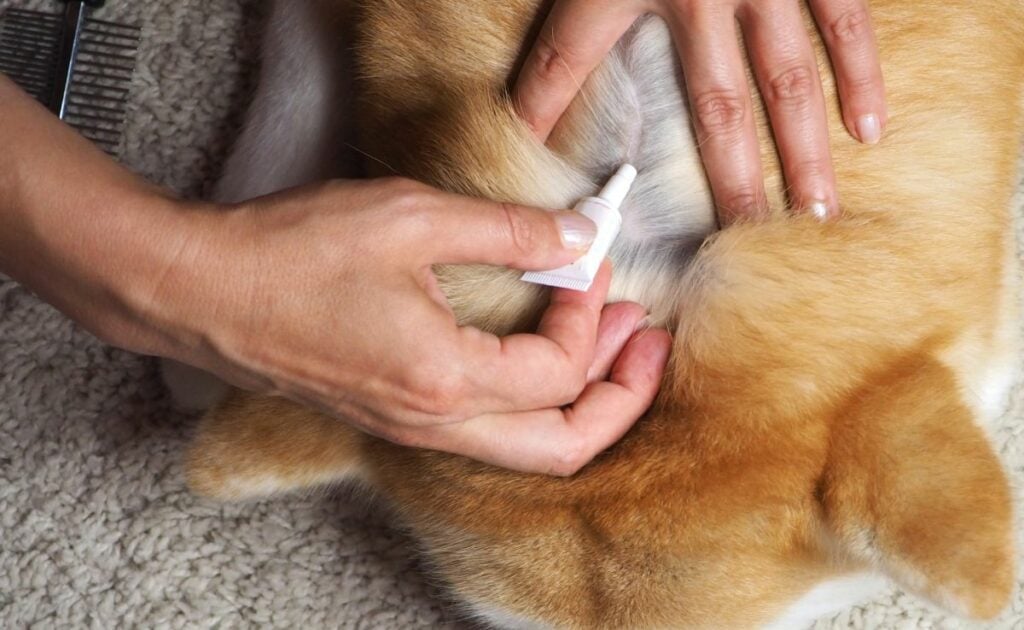
Topical treatments, chewables, and collars are all effective options. Your vet can help you choose the right approach based on your dog’s needs.
4. Skin Infections
Skin infections are one of the most common medical reasons dogs start chewing or licking at their nails and paws. Once the skin becomes irritated or broken, bacteria, fungi, or even mites can take advantage, especially in the warm, moist spaces between the toes.

Types Of Skin Infections
- Bacterial infections: Often caused by excessive licking, small wounds, or scratches that get contaminated with dirt or debris.
- Fungal infections: Includes yeast and ringworm. Yeast thrives in damp environments, while ringworm can cause circular rashes and itching around the paws.
- Demodectic Mange: A parasitic infection caused by mites that burrow into the skin, often resulting in hair loss, redness, and chewing at the feet.
Common Signs Of Skin Infection
- Red or swollen paw pads
- Raw or oozing skin between the toes
- A strong or musty odor
- Hair loss or crusty patches
- Excessive licking or nail biting
- Limping or sensitivity to touch
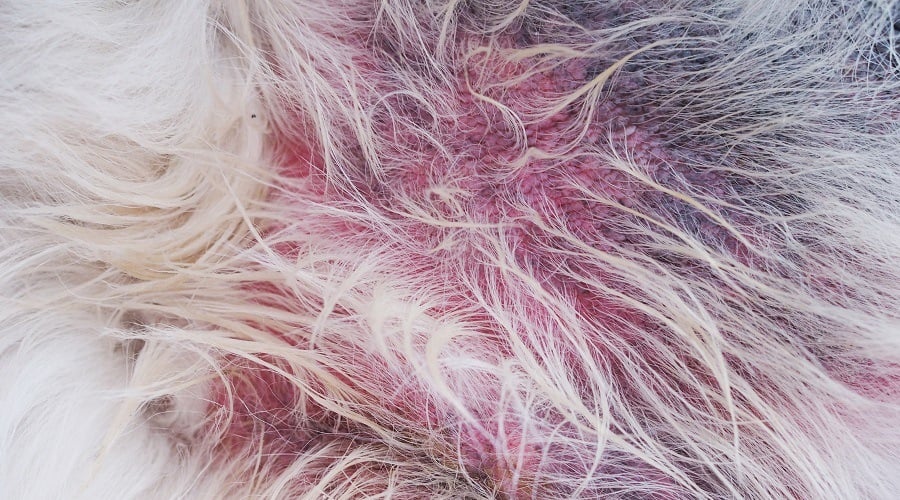
Note: Skin infections can start small but quickly get worse if your dog keeps chewing. If you notice any of these signs, schedule a vet visit. Treatment may include antibiotics, antifungals, medicated sprays, or wipes to clear the infection and prevent it from spreading.
My Experience: Yeast Trouble After Pool Time
This summer, I noticed my Golden Retriever, Rio, licking his paws and chewing at his nails—a new behavior for him. We took him to the vet, and sure enough, the skin between his paw pads was bright red and inflamed.
The vet suspected allergies, which are common in Goldens, but also tested for yeast.
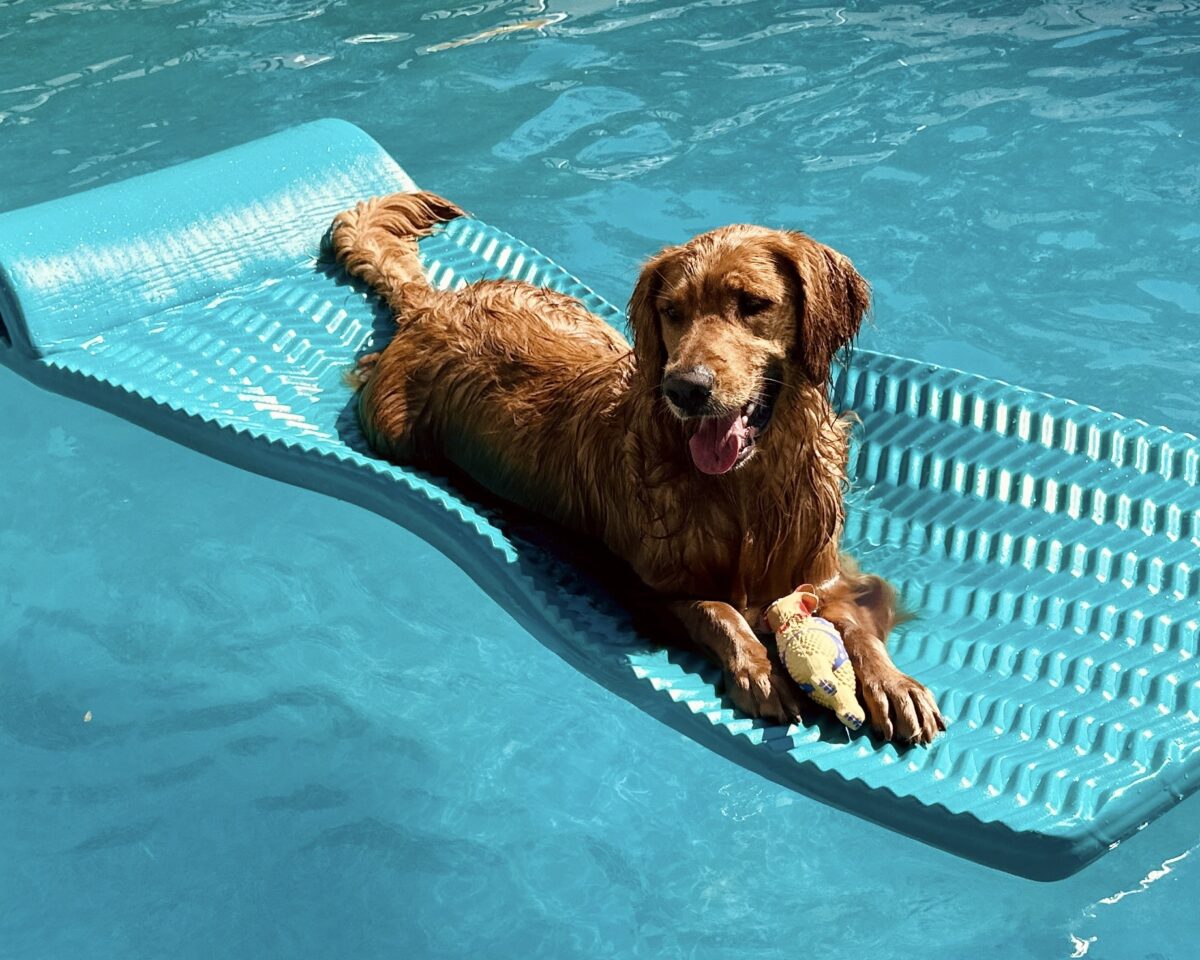
It turned out to be a yeast infection, likely triggered by all the time Rio had been spending in the pool. Yeast loves moisture, and wet paws provided it with the perfect environment to grow.
Our vet prescribed VetOne KetoHex Antiseptic Pet Wipes, which helped clear things up quickly. Now, we make sure to thoroughly dry in between Rio’s toes every time he gets out of the water.
5. Foreign Objects
If your dog suddenly starts chewing one paw more than the others, it might not be due to allergies or an infection; it could be something stuck.
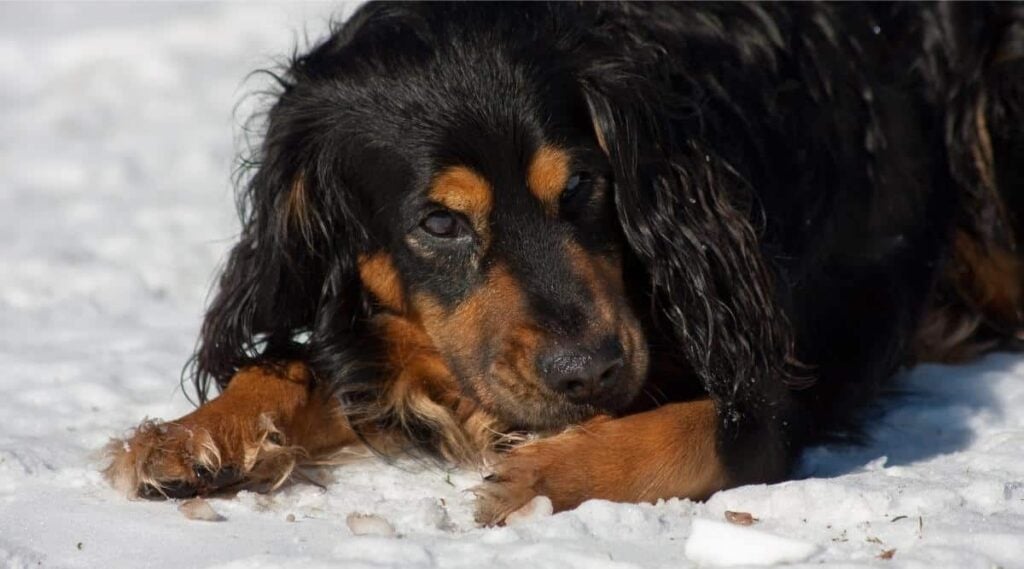
Dogs explore the world with their feet, and it’s easy for tiny objects to wedge themselves between the toes or around the nails. Things like grass awns, mulch, splinters, burrs, or even bits of household debris can cause severe irritation.
Check for:
- Swelling or redness in one paw
- Limping or favoring a leg
- Chewing focused on a single toe or area
- Yelping when you touch the paw
If you can see the object and safely remove it, do so gently.
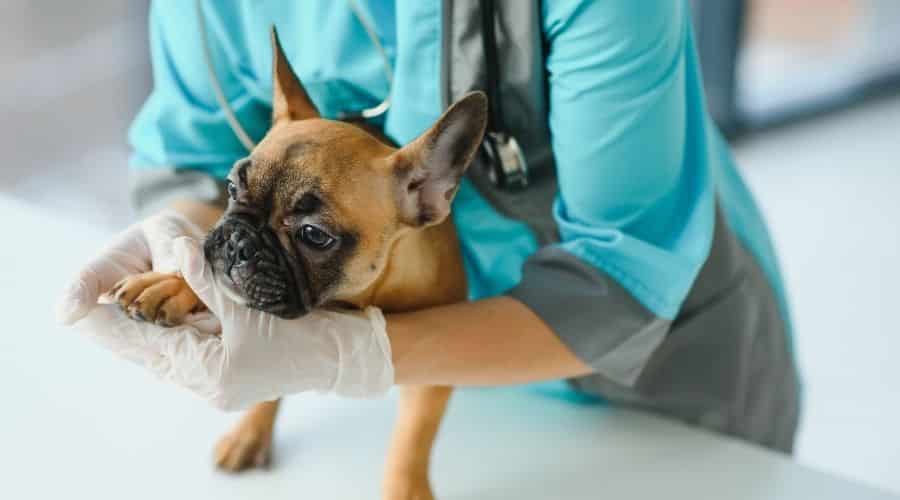
However, if your dog won’t let you near the area or it appears to be infected, contact your veterinarian. Some items—such as foxtails—can burrow deeper into the skin and may require professional removal.
A quick paw check after walks or outdoor play can help prevent problems before they start.
6. Anxiety or Stress
Just like humans, some dogs bite their nails when they’re anxious. It might look like a strange habit, but for many pups, chewing is a way to cope with boredom, stress, or nervous energy.
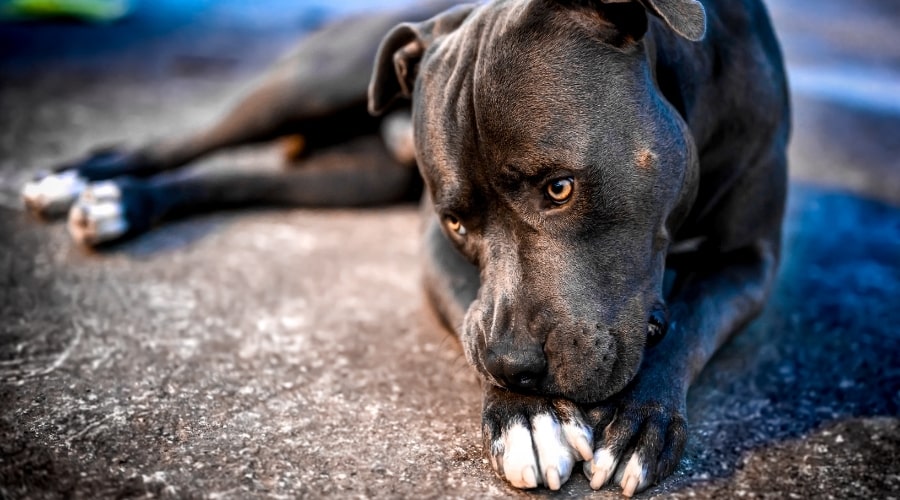
Common triggers include:
- Being left home alone
- Changes in routine or environment
- Lack of mental stimulation
- Separation anxiety
If nail chewing tends to occur when you’re away or during downtime, your dog might simply need a better distraction.
Try giving them a puzzle feeder or treat-stuffed toy to keep their brain busy. A healthy chew or bone can also help redirect the behavior.
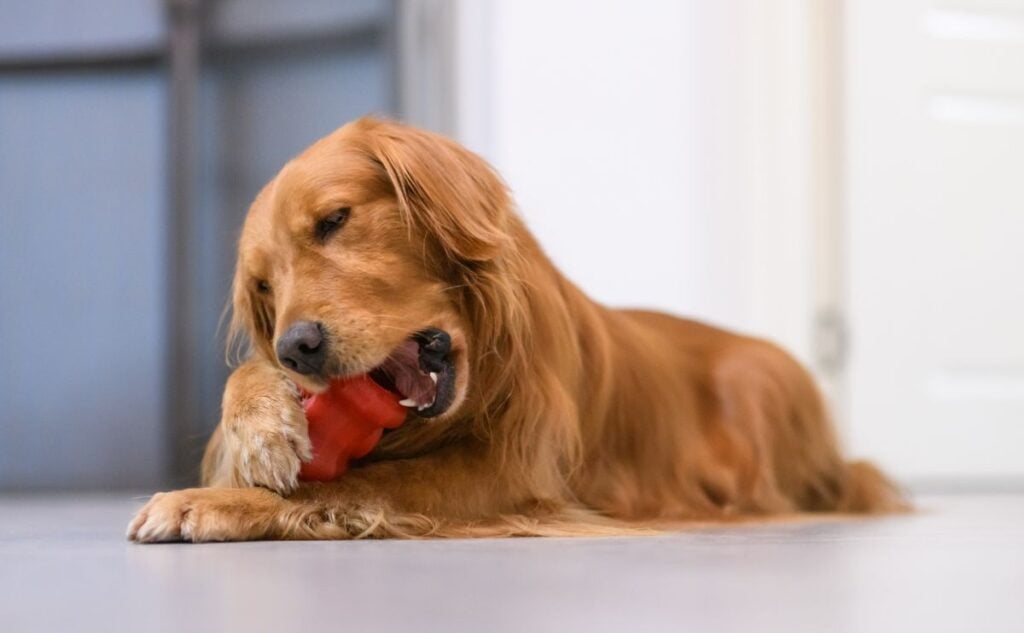
In more serious cases, nail chewing can become compulsive.
If your dog is also exhibiting signs such as pacing, panting, house soiling, or destructive behavior, it may be part of a larger anxiety issue. Learn more about dog anxiety and stress, and discuss potential solutions with your veterinarian.
Your vet may recommend training strategies, prescription medication, or calming supplements. Some pet parents also find success with CBD oil or calming treats as part of an overall plan.
7. Nail Injury or Pain
Dogs are not immune to broken nails—and they can hurt. Nail injuries are surprisingly common, especially in active pups who love to run, dig, or zoom around rough terrain.
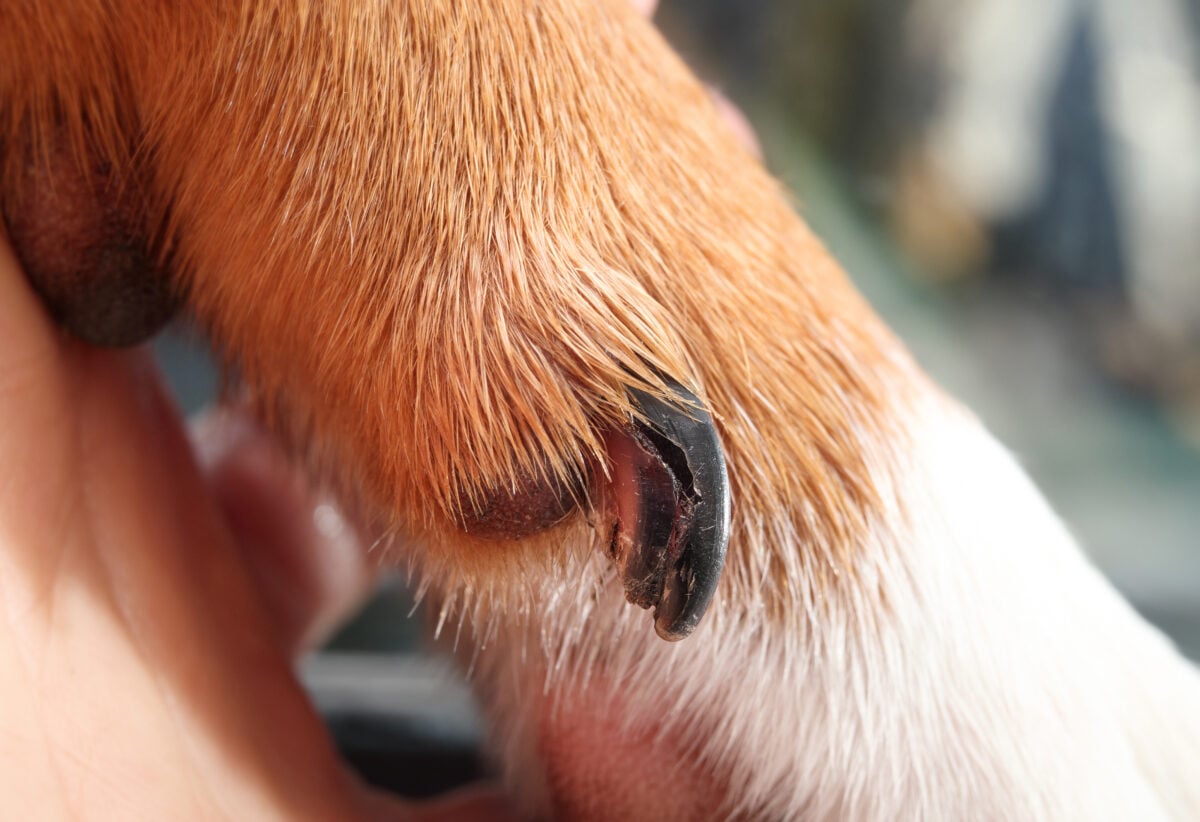
A nail can crack, split, or tear if it gets caught on something or if it’s already too long. Since dogs can’t exactly point to where it hurts, they often start licking or biting at the injured nail to soothe the pain.
Signs Of A Nail Injury
- Excessive nail biting or licking
- Swelling or redness around the nail
- Blood on the paw or floor
- Limping or avoiding weight on the paw
- Sensitivity when touched
- Refusing to let you examine the foot
- Whining or signs of distress
Watch for: If your dog suddenly won’t walk or lets out a yelp mid-play, check their nails first. A cracked nail can cause significant pain with every step.
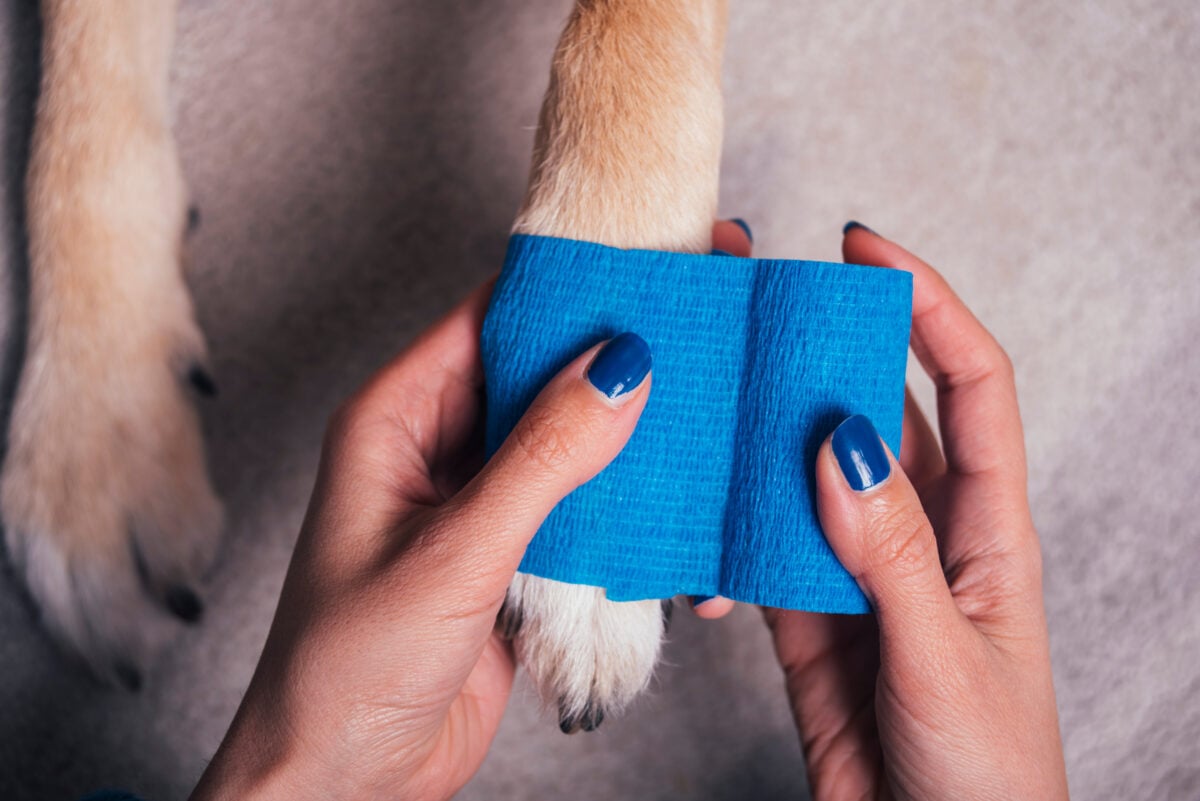
If you suspect a nail injury, contact your vet as soon as possible. Nail wounds can become infected quickly and may require trimming, bandaging, or antibiotic treatment.
8. Growths Or Lumps On The Paws
Not all paw chewing is caused by allergies or infections. In some cases, your dog may be reacting to something growing where it shouldn’t be.
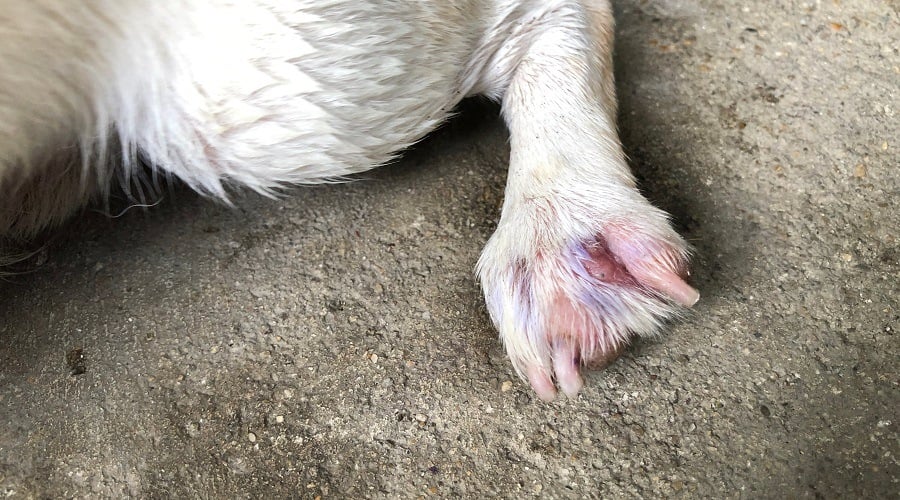
Lumps and bumps on or around the paw—though less common—can cause irritation, pressure, or pain that leads to nail chewing and licking.
These may include:
- Interdigital cysts (between the toes)
- Masses near the nail bed
- Abscesses from past injuries
- Warts, growths, or benign tumors
- Ingrown or embedded nails
What To Look For
- A swollen toe or raised bump near the nail
- Bleeding, oozing, or limping
- Reluctance to let you touch the area
- Sudden interest in one specific paw
If you spot anything unusual, have your vet check it out right away. Some growths are harmless, but others can become infected—or may need to be removed or biopsied.
A Note On Arthritis
Chronic joint pain from arthritis can also lead to licking and nail chewing, especially in senior dogs. It’s not always as apparent as an injury, but some dogs try to soothe their discomfort by focusing on their feet.
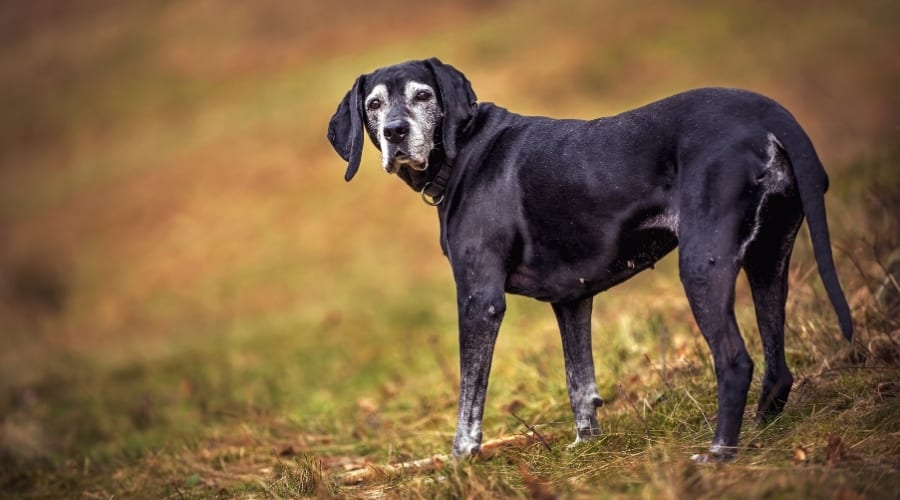
Tip: If your dog is older and suddenly starts chewing their paws, consult your vet about the possibility of arthritis or joint-related pain.
Always discuss new or persistent nail biting with your veterinarian to rule out underlying issues and help your dog feel more comfortable.
Simple Paw Care Tips To Keep Chewing At Bay
While not every case is preventable, good paw hygiene can go a long way in preventing issues.
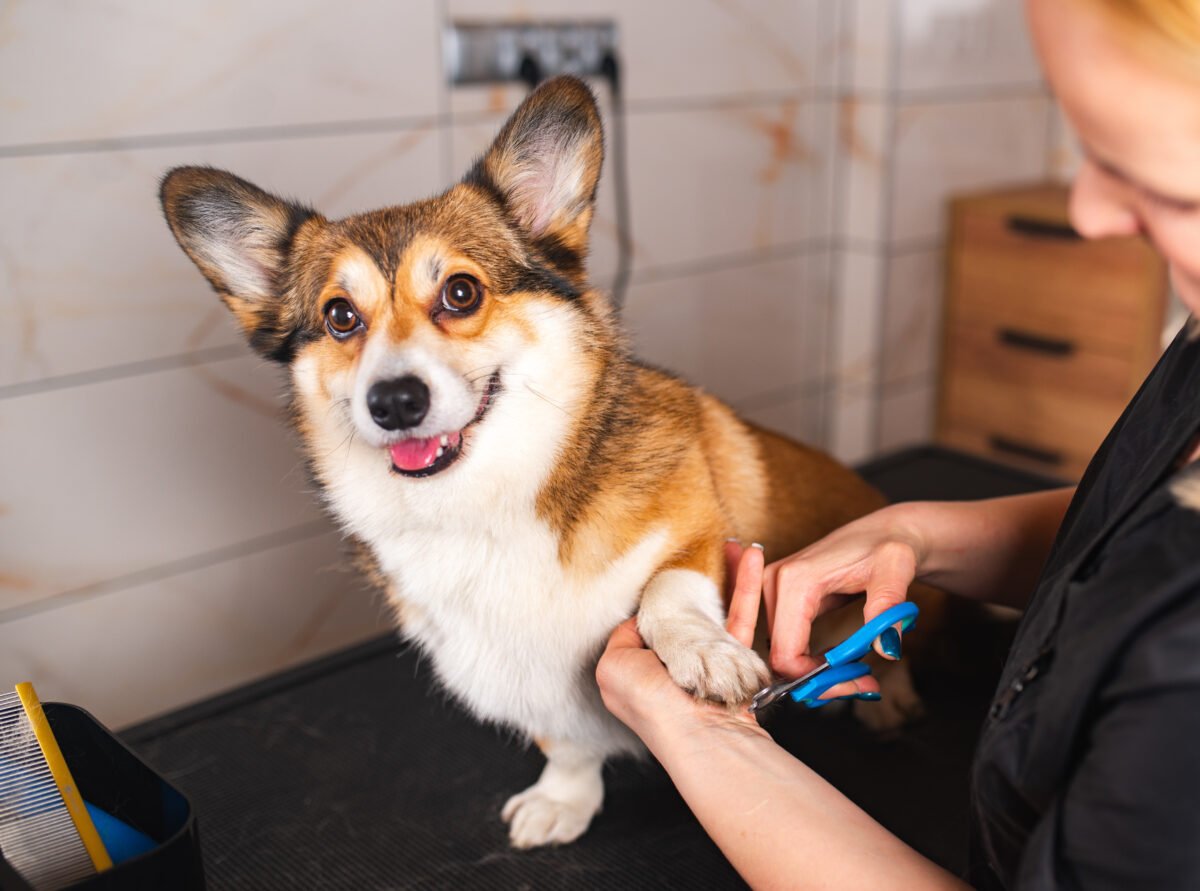
Here are a few simple ways to stay ahead of the chewing:
- Trim nails regularly. If you hear clicking on the floor, it’s time for a trim.
- Dry paws after baths, walks, or swims. Moisture invites irritation and fungal growth.
- Inspect feet often. Look between the toes for debris, redness, or early signs of infection.
- Stick to monthly flea and tick prevention. Parasites are a significant trigger for chewing.
- Rotate toys and chews. Mental stimulation helps reduce stress-based behaviors.
Consistent care and early intervention are the best way to keep paws healthy and nail chewing at bay.
Frequently Asked Questions
Nail biting in dogs might seem harmless at first, but it’s often a sign that something deeper is going on. Below are answers to common questions pet parents have when their dog starts chewing or licking at their nails.
Don’t see yours? Ask us in the comments!
Is It Safe For My Dog To Bite Their Nails?
Not really. While occasional chewing may be a standard form of self-grooming, consistent nail biting is often a sign of pain, irritation, or anxiety.
Left unchecked, it can lead to broken nails, infections, or even open wounds. If your dog is biting frequently or intensely, it’s best to determine the cause of the behavior and consult with your veterinarian.
How Can I Stop My Dog From Biting Their Nails?
Begin by scheduling a veterinary visit to rule out potential medical issues, such as infections, allergies, or injuries. You can also offer distractions, such as a puzzle feeder, a long-lasting chew toy, or a new toy.
Keep your dog’s paws clean and dry, and stay on top of regular nail trimming. If clipping is stressful, consider using a nail grinder or booking a grooming appointment for help.
What Should Dog Nails Look Like?
Healthy dog nails should be uniform in color and texture. They shouldn’t be cracked, brittle, peeling, or oddly colored.
Ideally, the nails should just peek out beyond the paw. If they’re clicking on the floor, they’re too long.
Is It Normal For Puppies To Chew Their Nails?
Puppies may occasionally nibble on their feet as part of exploring their bodies, but regular nail biting is not typical. It could be due to overgrown nails, irritation, or even anxiety from a new environment.
Monitor the behavior and look for signs of redness or injury. If the condition persists, consult your veterinarian to rule out early allergies or infections.
When Should I Take My Dog To The Vet For Nail Chewing?
If your dog is biting or licking their nails frequently, seems distressed, or shows signs like limping, swelling, or bleeding, it’s time to call the vet. Even minor issues can worsen quickly if left untreated.
Early treatment can help your dog feel better and prevent long-term damage.
How To Help Your Dog Stop Chewing Their Nails
Nail chewing can be your dog’s way of telling you something’s wrong, whether it’s itchy paws, an injury, or just a cry for a little more attention. Keep an eye on the behavior, check their paws regularly, and when in doubt, talk to your vet. Early intervention can prevent small issues from turning into something more serious.
If you’re not sure where to start, our guides on grooming your dog at home, allergy relief options, and calming treats can help you troubleshoot the cause and get your pup back to feeling their best.
